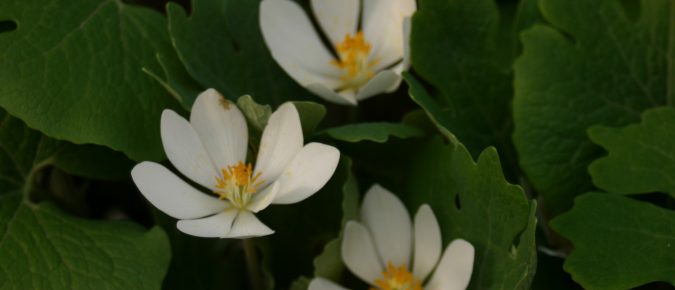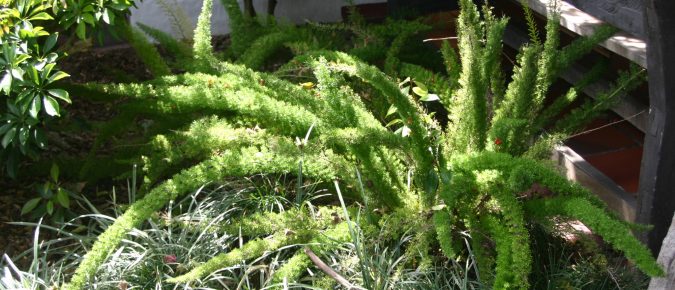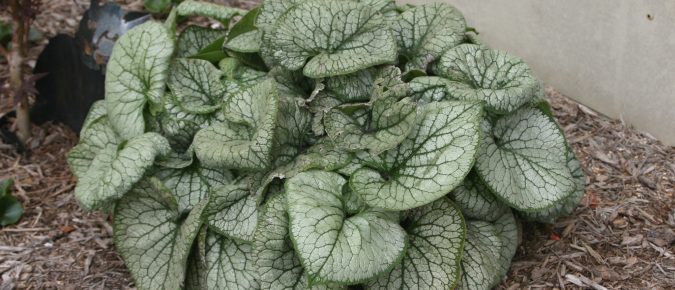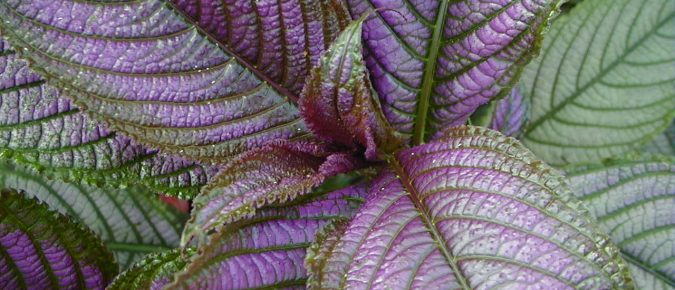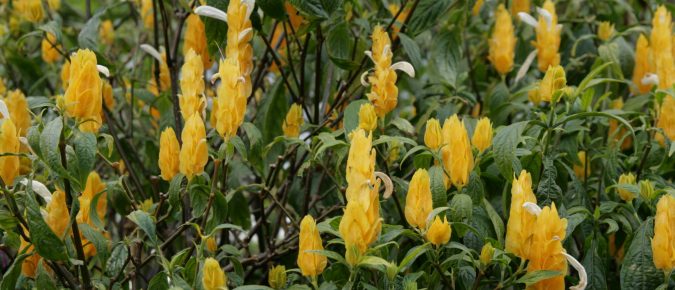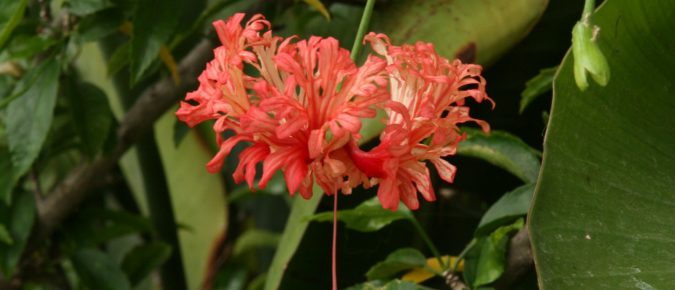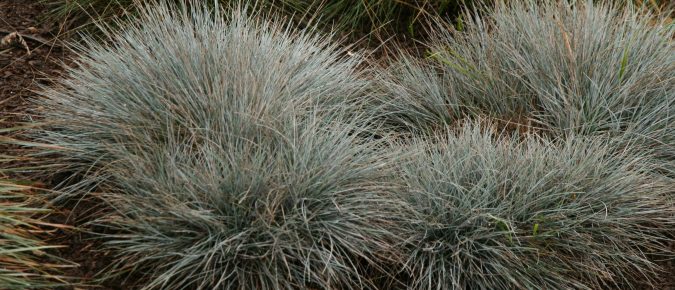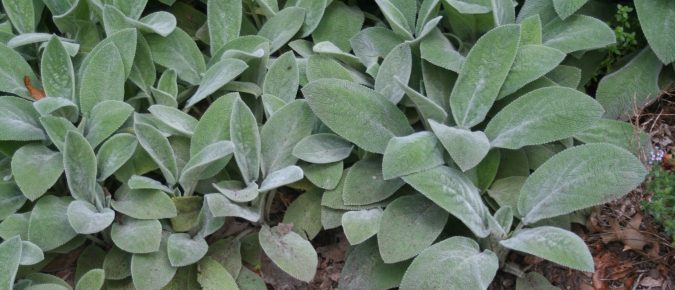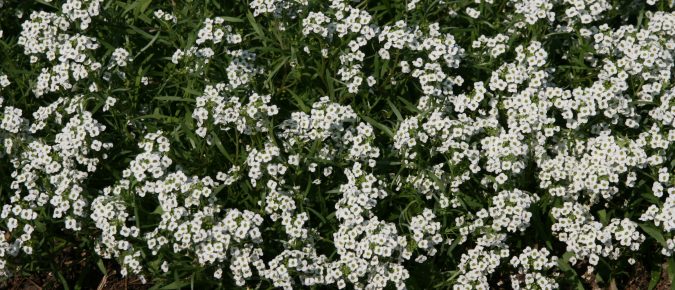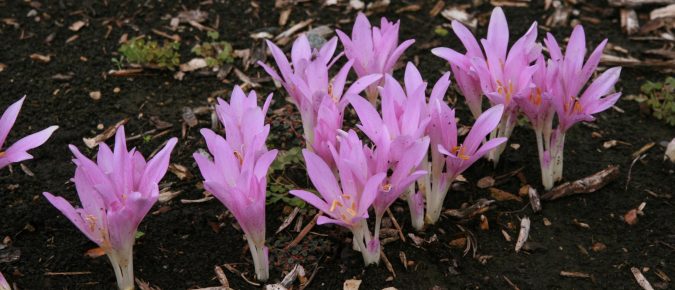Early spring bloomers are much appreciated after a long, cold winter. Bloodroot is one of the first wildflowers to open its bright white flowers in Midwestern woodlands. This native plant is at home in deciduous forests and in gardens where appropriate conditions can be provided. To learn more about this spring wildflower, read this article…
Asparagus fern is a South African native which is not a fern, but is related to the edible asparagus. The bright green, ferny foliage of this tender perennial makes it a nice houseplant and a good counterpoint to brightly colored flowers in an outdoor seasonal planting. To learn more about this plant, read this article…
Brunnera macrophylla ‘Jack Frost’ has been chosen by the Perennial Plant Association as their Plant of the Year 2012. With light blue flowers in spring and bright, silvery, crackled-looking foliage that really shines in the shade, this plant is a great addition to most gardens. You can find out more about this special cultivar by reading this article…
Looking to add some drama to your garden? Forget flowers and go with iridescent foliage instead for a real show-stopper! Persian shield is a tender perennial grown as an annual in our climate that has been used since Victorian times for its ornamental foliage. To learn more about this exotic, but easily grown plant, read this article…
Pachystachys lutea is a common landscape ornamental in tropical areas, but you can grow it at home. It’s upright, bright yellow to orange inflorescences contrast nicely with glossy, dark green foliage. To learn more about growing this exotic flowering tropical plant as an outdoor seasonal plant or houseplant, read this article…
Hibiscus is a quintessential tropical flower, with big, brightly-colored blossoms. But there is a species that has very different, pendant flowers with elaborately dissected and recurved petals. Like other tropical hibiscus, Hibiscus schizopetalus is a tender plant that cannot survive our winters but can be grown as a houseplant. To learn more about this species, read this article…
Ornamental grasses are a common addition to many landscapes. Festuca ovina glauca – blue fescue or sheep fescue – is a low clumping species with blue-green foliage. This cool season grass can be used as a specimen or in masses. To find out more about this attractive grass, read this article…
Solomon’s seals are woodland plants with arching stems. There are a number of both native and exotic species and cultivars that are used primarily as foliage plants in ornamental shade gardens (as their small hanging flowers are attractive, but relatively inconspicuous). To learn more about the genus Polygonatum read this article…
Lamb’s ears (Stachys byzantina) are a good addition to Midwestern gardens for their silvery foliage. One cultivar that stands out is ‘Big Ears’ for it’s extra large leaves. The leaves of this one aren’t quite as silver as many others, but it offers bold texture in a low mounding plant. To learn more about this big-leafed beauty, read this article…
Looking for a fall-bloomer other than mums or asters? The genus Chelone is a native perennial with the common name of turtlehead from the resemblance of the flowers to the shape of a turtle’s head with its mouth partly open. The various species all bloom in late summer to fall, for a spark of pink, red or white flowers on dark green plants. You can learn more about this genus in this article…
With billowy white or purple flowers, sweet alyssum is a good addition to annual flower beds or containers. This low-growing plant native to the Mediterranean makes a good ground cover and the sweetly fragrant flowers are attractive to many beneficial insects. To learn more about sweet alyssum, read this article…
Brighten the fall landscape with fall-blooming bulbs – yes, there are some fall-bloomers that thrive in Wisconsin. Autumn crocus is probably the best of these, with large, chalice-shaped flowers in pink or white. The foliage appears in spring and dies back in early summer, leaving the flowers to pop up on their own in the fall. To learn more about this bulb (that isn’t really a true crocus), read this article…

